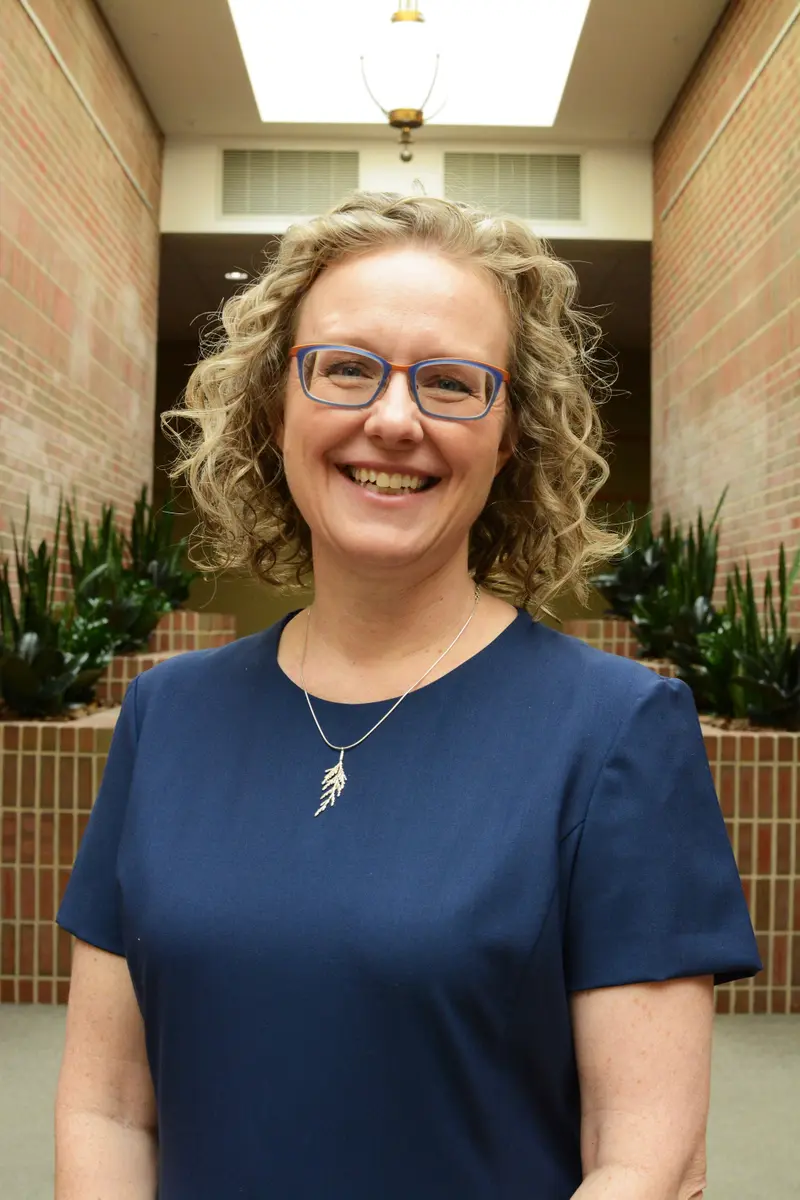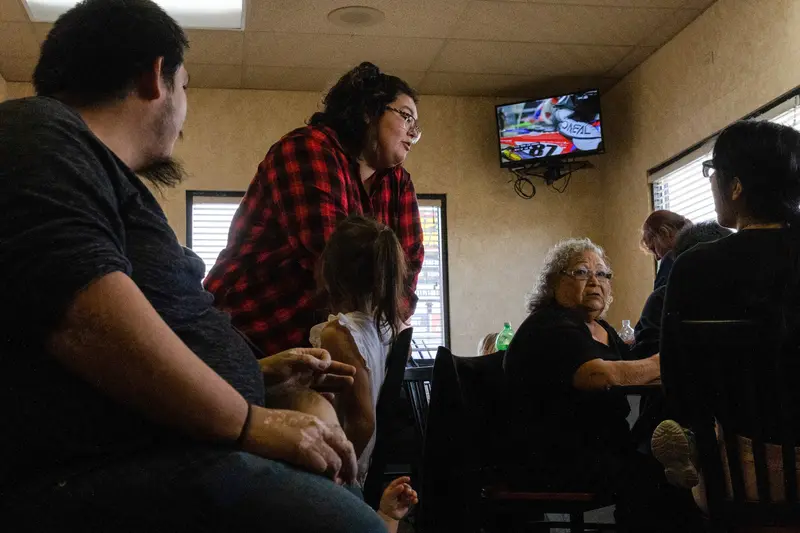On Thursday, the U.S. Supreme Court upheld the 1978 Indian Child Welfare Act. The decision, by a 7-2 vote, meant that the law will continue to require giving preference to placing adoptable Native American children with Native families.
Kathryn Fort, director of the Indian Law Clinic at the Michigan State University College of Law, represented tribes who appealed after a federal judge in Texas declared ICWA unconstitutional in 2018. She’d spent months anticipating that the Supreme Court would make major changes to the law or even dismantle it.
“I was stunned,” said Fort the day after the decision.
Some legal observers noted that because the justices did not resolve the racial bias claim in the case, which is officially known as Haaland v. Brackeen, the door is open for a future challenge on those grounds. Fort said that’s nothing new.
“This was their best shot at a case,” she said, referring to ICWA opponents. “The messaging has really come through that people who are removing Native children from their family and culture, you're not doing good things for Native people.”
Although the Supreme Court let the law stand, Fort has nonetheless spent a lot of time thinking about how ICWA could be made to work better. A ProPublica investigation published the morning of the decision suggests that the law is unevenly applied across the states. The story profiled the case of Cheyenne Hinojosa, a Native American mother in South Dakota who lost her parental rights for one of her children due to the child welfare agency’s failure to follow ICWA. A ProPublica analysis found that in South Dakota, more than 700 Native American children — or about one of every 40 living in the state — experienced the termination of their parents’ rights from 2017 to 2021. It’s one of the highest rates in the country.

Fort said that ProPublica’s findings were “unsurprising” and that there are a number of things that can be done at both the state and federal levels to try to fortify ICWA’s protections and help achieve its authors’ intent “to prevent the breakup of Indian families.”
1. Better data
Fort said the federal government has never properly tracked whether states are complying with ICWA. The Adoption and Foster Care Analysis and Reporting System is the only national dataset that describes outcomes of the child welfare system, but it doesn’t collect information about whether children are covered by ICWA.
AFCARS also doesn’t track whether components of the law are being correctly applied, or if children in state custody are being placed in Native American households. Without this data, Fort said, it’s impossible to “understand where the holes are that need patching in the country.”
In 2016, the Obama administration finalized a new rule that would have changed the collection method for AFCARS data, which for the first time would have included a category for tribal citizenship, Fort said. Along with this and dozens of new data points, the changes would have made it possible to track trends in the outcome of ICWA-eligible cases. The Trump administration withdrew those updated guidelines, and ever since then Fort’s clients have been involved in a lawsuit that argues the decision was unjustified.
According to Fort, the lawsuit is pending in a federal court of appeals while the Biden administration mulls how to proceed.
“Obviously, given that we spent over 10 years getting the 2016 rule, it’s a little frustrating that we’d have to essentially have to go through that process again,” she said.
2. Rethinking the Adoption and Safe Families Act
One issue that affects not just ICWA cases but the entire child welfare system is the impact of the 1997 Adoption and Safe Families Act. The law created strict timelines to reduce the amount of time children spend in foster care, allowing them to be adopted more quickly. Once 15 months have passed since a child has been removed from a parent, child welfare agencies in most cases must file for termination of parental rights.
A termination is the legal end to a parent’s relationship with their children.
ASFA has had a huge influence on the system. According to a recent study, the risk of a child in the U.S. having the legal relationship with their parents severed during childhood roughly doubled from 2000 to 2016.
Over the years, Fort said, ASFA has frequently collided in court with ICWA; the two laws have almost opposite intentions. ICWA asks states to go above and beyond to keep Native American parents and children together, while ASFA incentivizes speedy decisions to permanently separate them.
Last year, a ProPublica investigation found that in some states, parents can permanently lose their children in as little as six months. The story documented a rising movement among advocates and policymakers — including a former U.S. Department of Health and Human Services official for the Trump administration — to overhaul or repeal ASFA.
Central to that movement is an interest in lengthening the 15-month timeline, which opponents say was a politically negotiated window rather than a science- or policy-backed timeline.
“It was a mistake,” said Fort, who added that not only does she believe that ASFA is bad for Native American children, but “I don’t think it’s good for any children.”
3. Codifying ICWA into state laws
In the lead-up to the Supreme Court decision, advocates pushed legislatures across the country to put the tenets of ICWA into state law, preserving at least some protections on the local level if the federal law were struck down. Several states introduced ICWA-like bills, and four passed. Today, 13 states have such laws on the books.
In the last session, South Dakota’s state legislature failed to pass several ICWA-related measures, in part because lawmakers said they should wait until after the Supreme Court’s decision.
“I think it’s helpful to have a decision like this just reinforcing to states that this is not going away,” said Fort.
She said she hopes the work to pass state laws will continue, and also that states will make ICWA training for child welfare workers a priority.
4. Money for tribal ICWA departments
While ICWA gives tribes many legal powers, their ability to act is tied to resources. Some tribes have healthy economies and well-staffed ICWA units; smaller, poorer tribes may not. For instance, Hinojosa is a member of the Lower Brule Sioux Tribe in central South Dakota, which employs a single ICWA coordinator and does not currently have an attorney.
Lack of funding renders parts of ICWA moot: Tribes may have to be selective when deciding which child welfare cases to intervene in or take jurisdiction over. Even if a tribe has only a small population living on its reservation, it may have thousands of members all over the country who could potentially ask for tribal involvement in child welfare matters.
Fort said there are also “frustrating funding barriers” that may provide an incentive for a Native American family to oppose having its case moved to tribal court. Keeping the case in state court can unlock federal foster care reimbursements for a child’s relative that the tribal child welfare system can’t match.
According to Fort, the federal government has underfunded ICWA since the start. In 1977, Congress estimated that fully funding ICWA programming on reservations would cost between $26 million and $62 million per year, or about $200 million to $500 million in 2021 dollars, Fort said. In 2020, the federal Bureau of Indian Affairs ICWA program sent a total of $14.4 million to tribes nationwide.
“There’s a lot of room for advocacy in Congress to increase the funding to tribal social service systems,” said Fort. “It’s not been a priority for the federal government in years past.”





